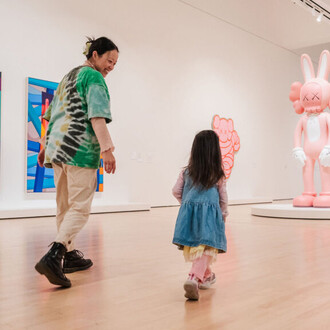Artists with interest in technical considerations such as reflection and reproduction have engaged with the still life genre for centuries. In its seventeenth-century heyday, verisimilitude was deemed a critical component of the technical success of any such work, ostensibly providing an accurate record of inanimate objects—often layered with symbolic content. In today’s artistic practice, however, such precision is no longer a categorical requirement. Though artists continue to render common things in their artwork for both symbolic and literal ends, the object’s essence is routinely conveyed in myriad ways. The artworks on view in this gallery demonstrate a diversity of approaches taken by artists working on paper over the past fifty years to representing some of the common objects with which we surround ourselves today, deploying ordinary objects to extraordinary ends.
William Bailey’s etching conforms to our expectations of a still life—the ceramic vessels are arranged credibly, masking the fact that they are drawn from memory rather than recording a literal tableau. But other works on view in this exhibition go beyond such plausible displays. In some, the everyday articles have turned “wild,” redesigned and repositioned for unconventional and unexpected use. In Willie Cole’s personal lexicon, ironing boards—which he transforms into printing plates, their impressions simultaneously representative of slave ships and the unknown women who—deprived of freedom—provided domestic services throughout the Antebellum South. Meanwhile, the giant electrical gadget at the center of Oldenburg’s Three-Way Plug, suggests a buoy or a floating building rather than merely a source of power.















